
Nanoleaf in June launched the Nanoleaf 4D Screen Mirror and Lightstrip Kit, which is an LED gradient light strip designed to go behind a television set. It uses a camera to detect what's on the screen, matching the colors of the light strip to the content on the TV.
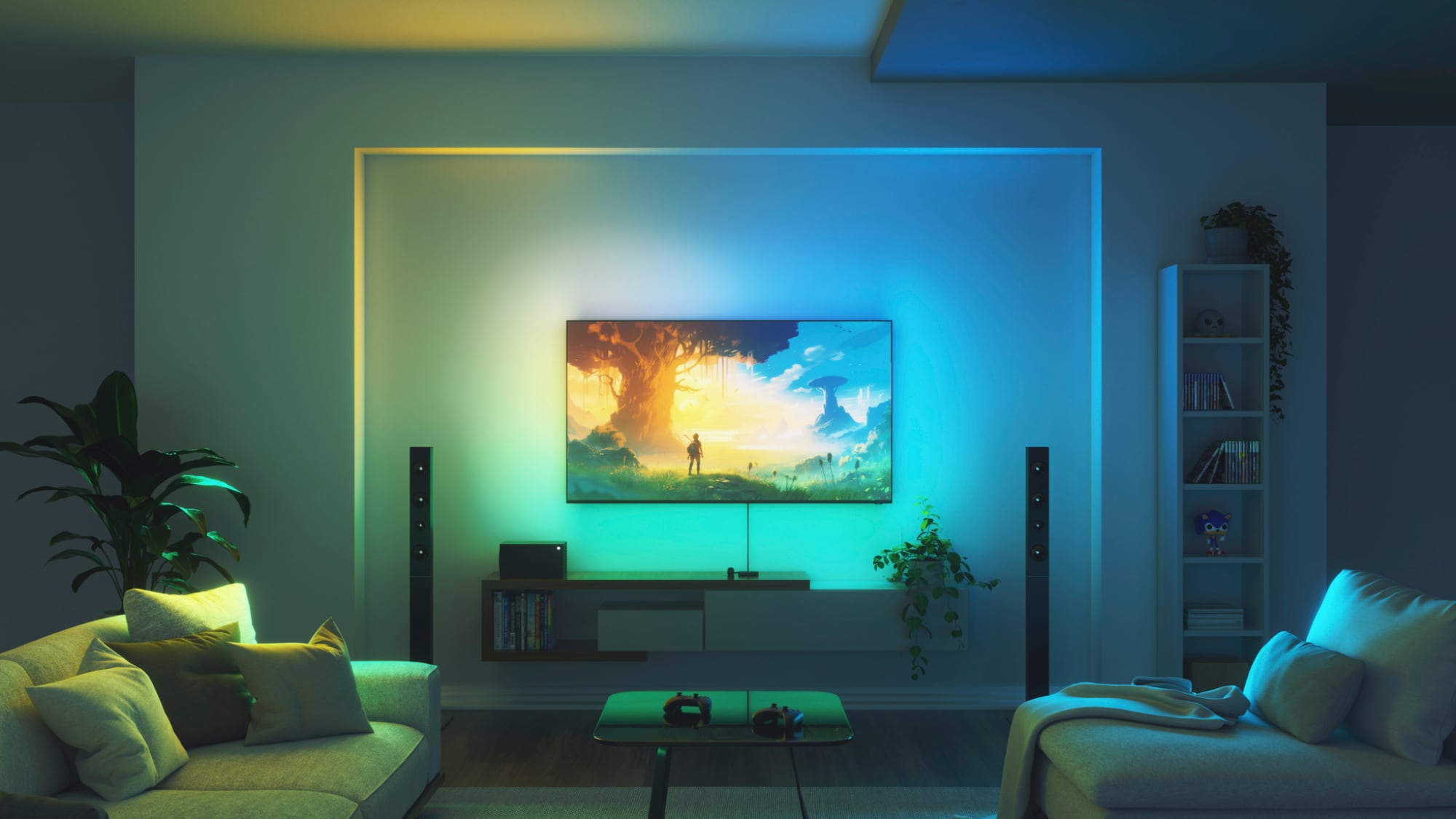
The light strip comes in two sizes, one that fits TVs and monitors up to 65 inches and one that fits TVs up to 85 inches. Either one can be cut to the ideal size for the TV or computer monitor that it's being used with. I tested with an 85-inch TV, so I didn't need to do any trimming, and in terms of size, the light strip was able to wrap almost the entire way around the TV.
There are 10 color zones per meter, so the light strip can display several different colors at once, and like other LED light strips on the market, it supports more than 16 million colors. Nanoleaf designed the light strips specifically for TV sets and monitors, and these are meant to be used for backlighting.
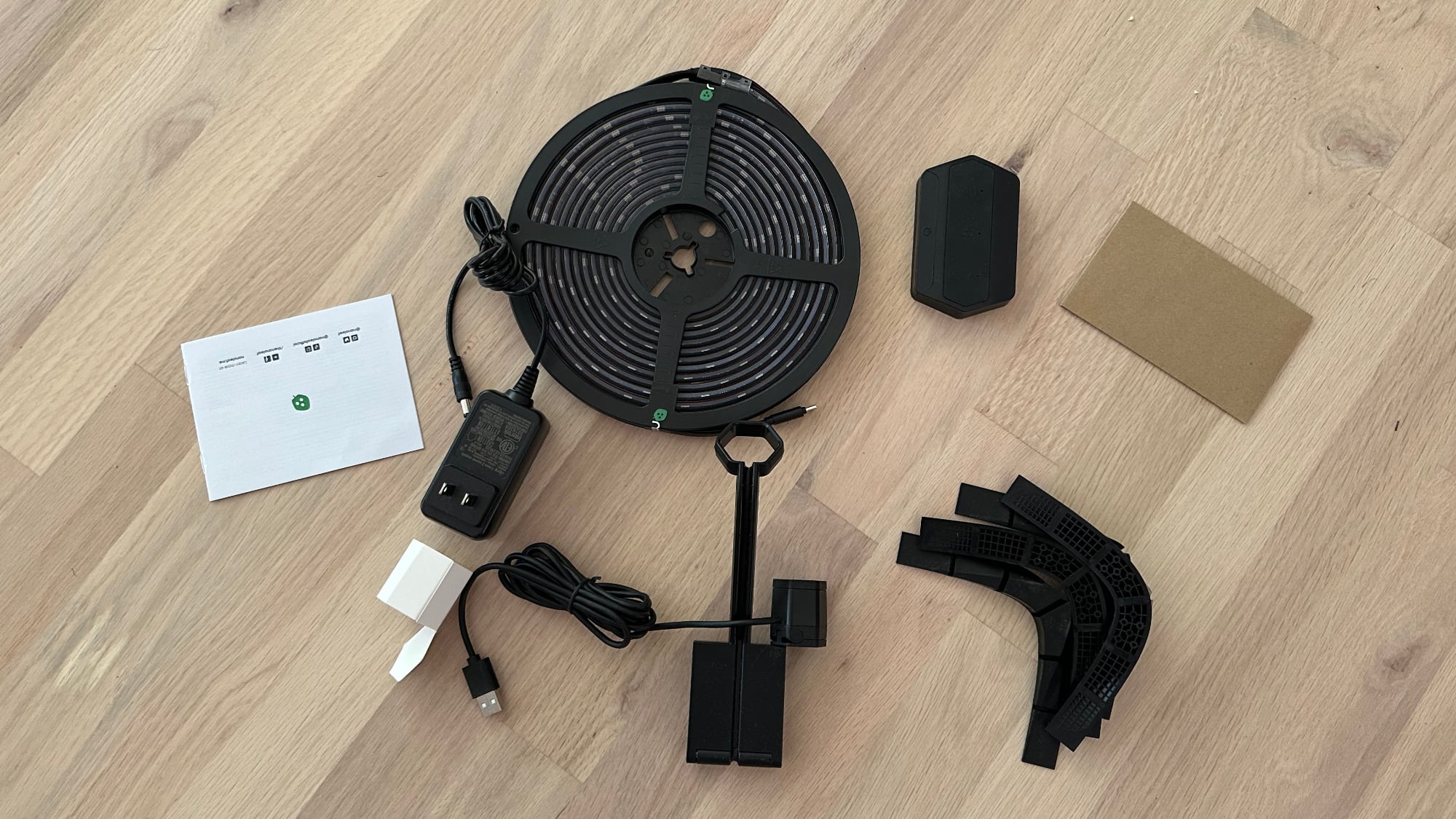
A camera attaches to the top of the TV with a mounting stand or it can be positioned at the bottom of the screen, and the colors detected by the camera are relayed to the light strip so that it can match what's displayed. Both the light strip and the camera attach to a controller unit that itself plugs into a power outlet.
Because of the way my TV is mounted, I have a small power strip at the back of it where I plugged in the light. I used adhesive to attach the controller, so all of the cords are hidden behind the TV. The design of the light does facilitate a setup where all of the cords can be hidden, but you will need some strong adhesive. The controller unit has options to turn on the lighting effect, so you might want to place it in a reachable location unless you're able to always use the app for control purposes.
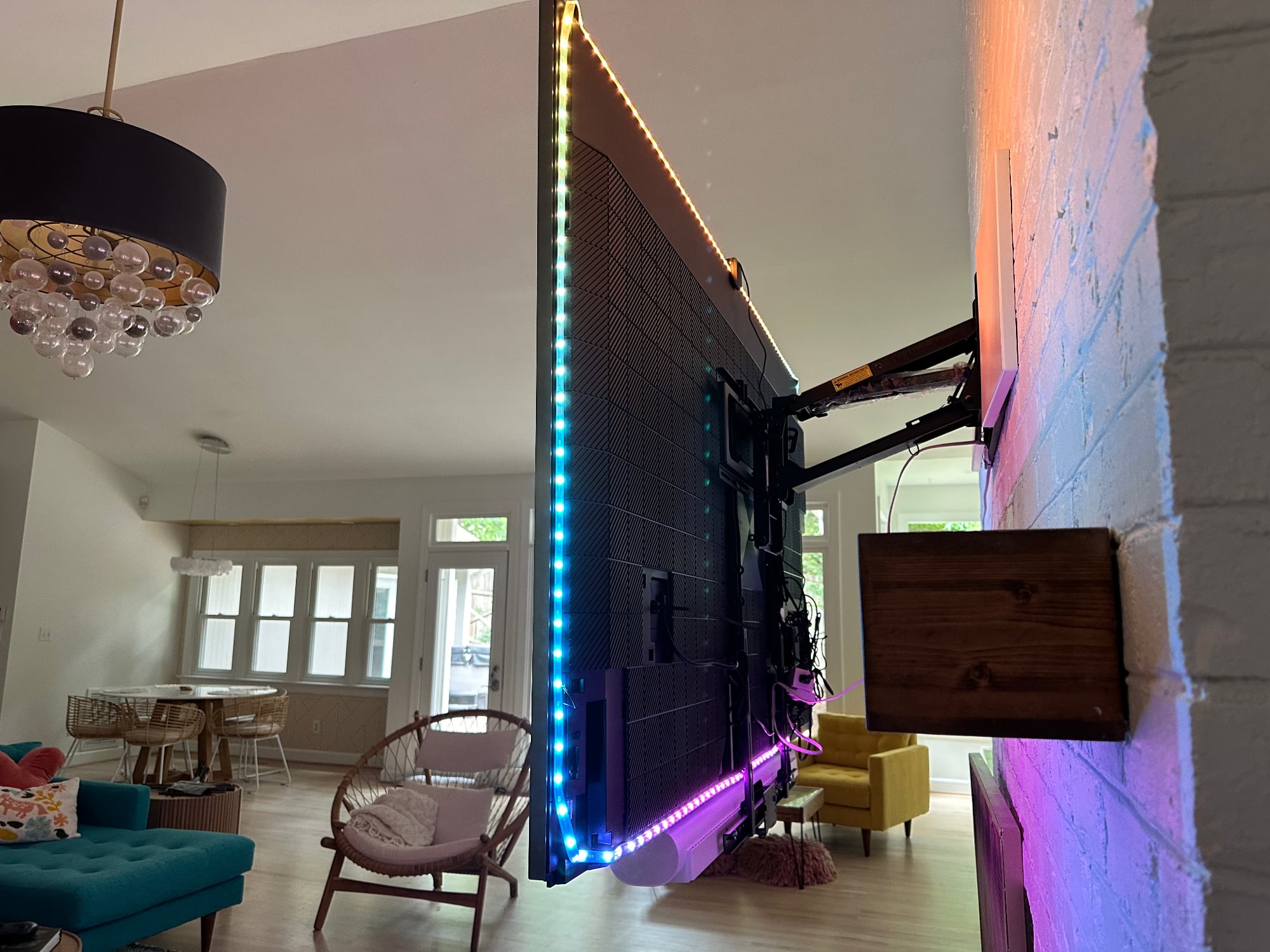
So far, the adhesive on the light strip has kept it up on my TV, but there are a couple corners where it's coming loose. Nanoleaf included some corner mounting hardware to route the 4D Lightstrip around corners, but the exterior design of my Sony TV didn't work with the hardware. I had to use the light strip alone, and I didn't have a good way to do the corners so they're always going to be angled in an odd way.
The main feature of the Nanoleaf 4D is the setup's ability to mirror the colors on the display to the LEDs on the light strip so the backlighting matches the TV content. There are HDMI boxes like the Hue Sync that do this, but with Nanoleaf's method, you don't need to have everything plugged into a central box and there are no limitations like no support for HDMI 2.1.
Backlighting that matches the content on a TV set or display adds to the immersiveness of what's being viewed, and it's a fun addition to a home theater or gaming setup. Not having to route accessories like my consoles and Apple TV through a secondary box is a major plus of the method that Nanoleaf is using to get this effect.
It's a little odd to have a camera at the top of the TV, but it blends into the background quickly enough and I don't notice it now. Nanoleaf included a privacy cover for the camera for when it's not in use, but the camera does not capture content and is only used to relay color to the light strip.
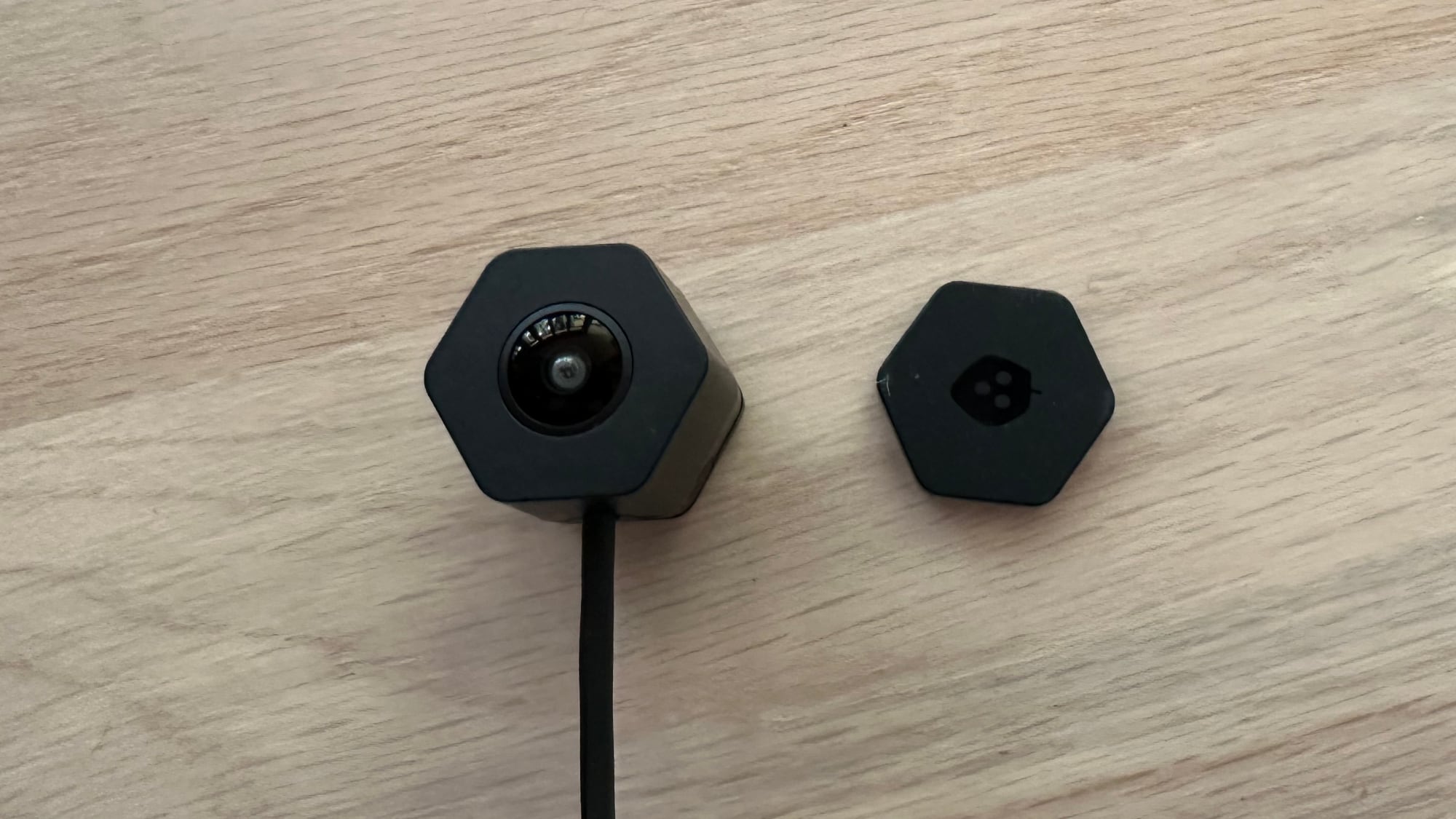
Nanoleaf has four "Mirror Modes" that affect the intensity of the light and the frequency of the color changes. There's 1D, 2D, 3D, and 4D. 1D is a plain white lighting effect, 2D is a single color that matches one of the colors on the screen, 3D is multiple colors, and 4D is similar to 3D, but the colors shift more often. I prefer 2D or 3D mode over 4D, which can be a little too distracting. My partner, who does not care for behind-the-TV lighting, did not have a problem with 1D or 2D mode. I definitely appreciate Nanoleaf providing options, because it ensures the Lightstrip can suit a wide range of tastes.
There are two modes to control the saturation of the color. Cinematic is more subtle, while vivid is more saturated. For movie content, I prefer Cinematic, while games work well with Vivid, but there's also an option to choose your own settings for saturation, dynamic range, and white balance. A rhythm mode can be enabled to time the colors to the sound coming from the TV, but the colors change so frequently that I wouldn't recommend this mode if you're actually watching the TV. It's nice for if you have music on in the background and want matching ambient lighting.
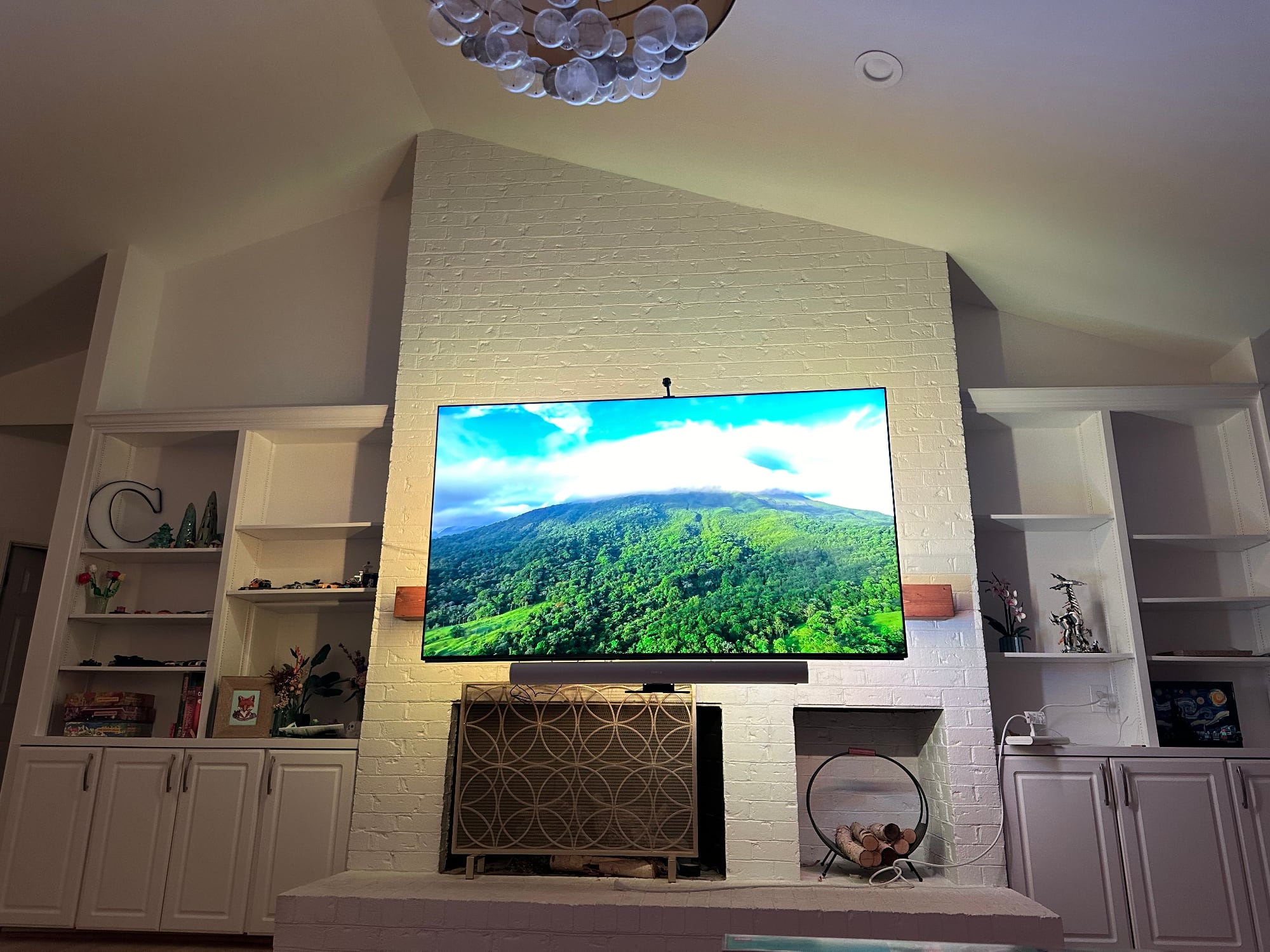
To match the colors of the light with the appropriate part of the TV content, there is a calibration process done through the Nanoleaf app. You mark each corner of the Nanoleaf Lightstrip once it's been applied to the TV, and t... Click here to read rest of article
Article Link: Review: Nanoleaf 4D Adds Easy Content-Synced Backlighting to Your TV or Display


